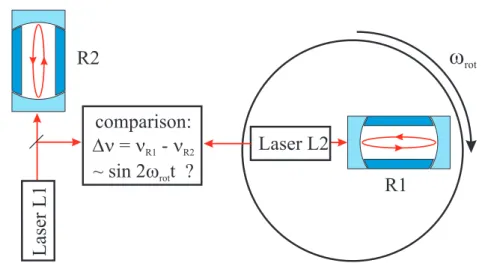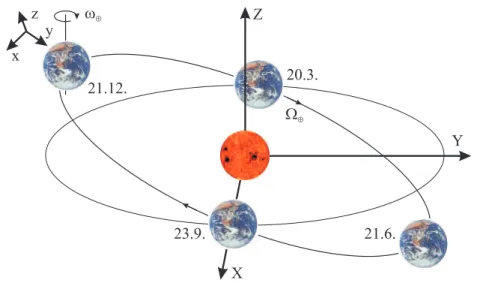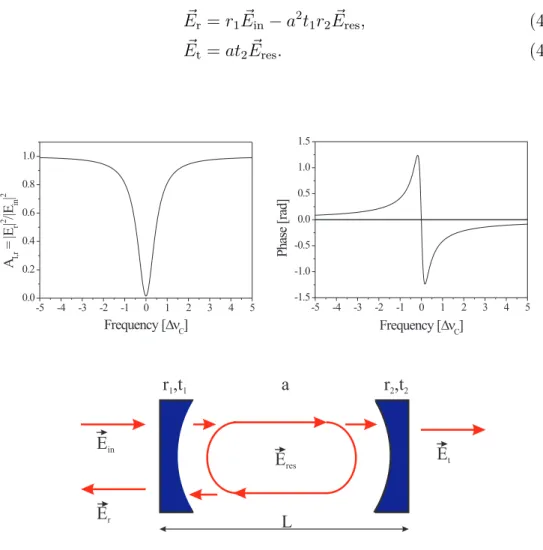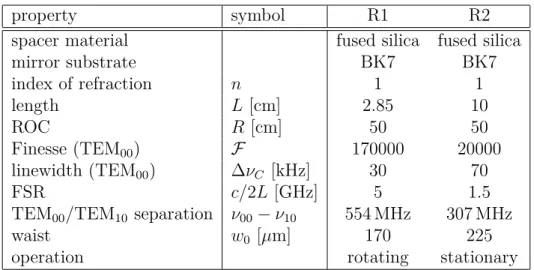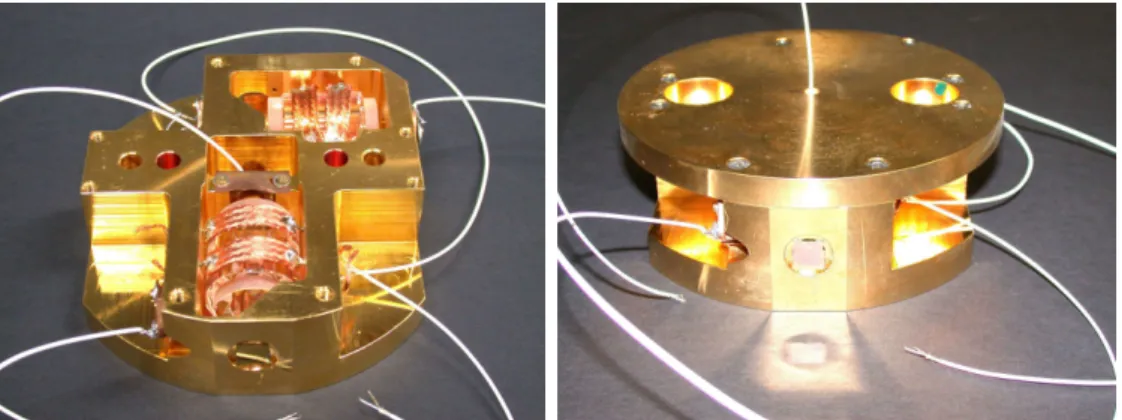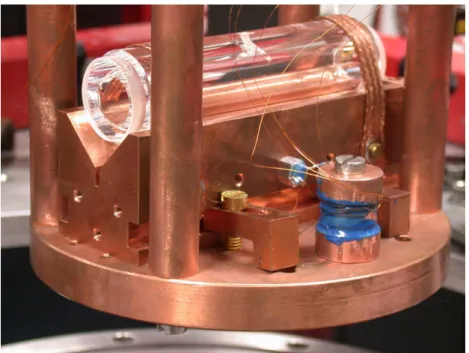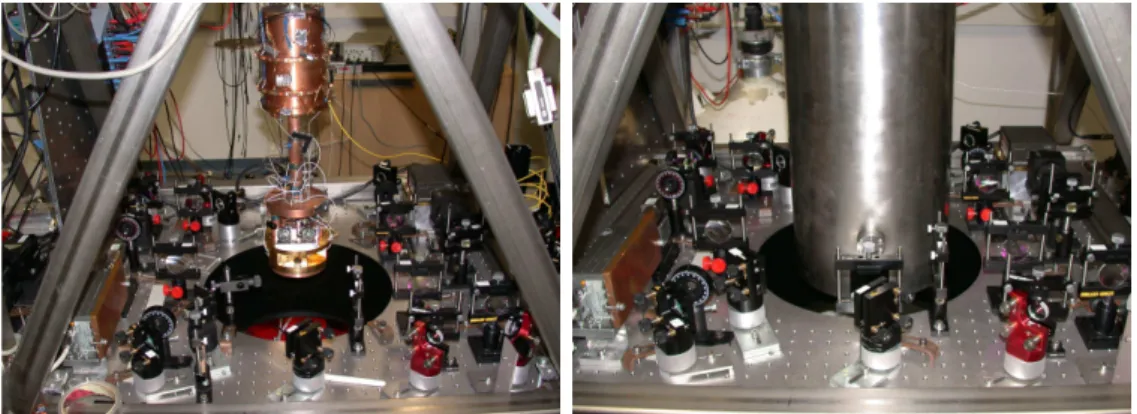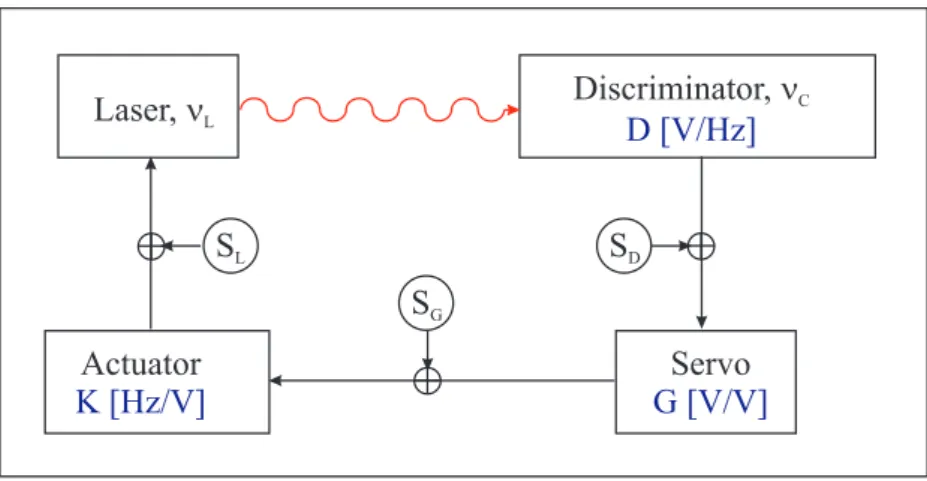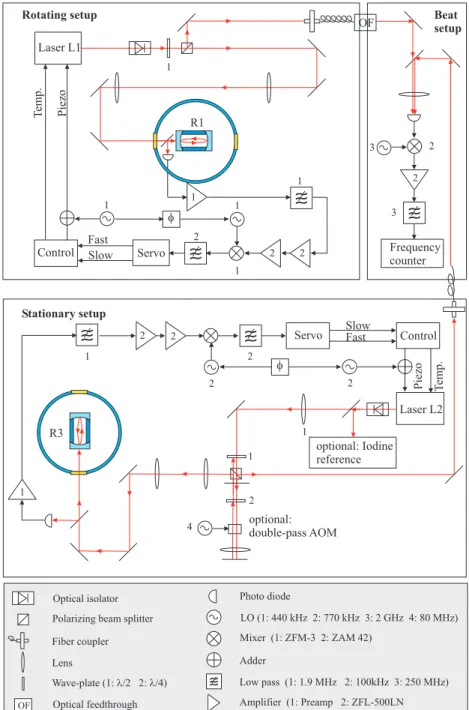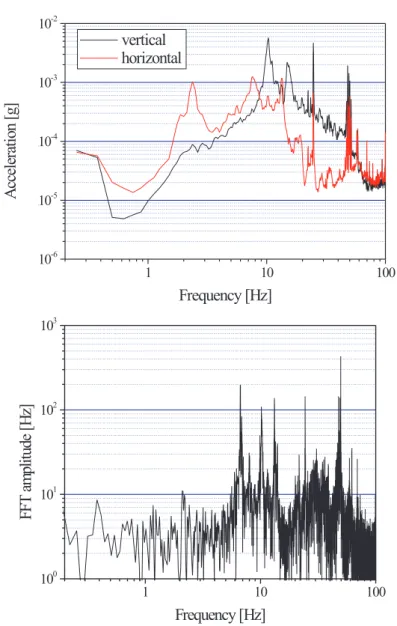A Michelson-Morley Test of Lorentz Invariance Using a Rotating Optical Cavity
DISSERTATION
zur Erlangung des akademischen Grades doctor rerum naturalium
(Dr. rer. nat.) im Fach Physik eingereicht an der
Mathematisch-Naturwissenschaftlichen Fakultät I Humboldt-Universität zu Berlin
von
Herr Dipl.-Phys. Sven Herrmann geboren am 06.02.1975 in Spaichingen
Präsident der Humboldt-Universität zu Berlin:
Prof. Dr. Dr. h.c. Christoph Markschies
Dekan der Mathematisch-Naturwissenschaftlichen Fakultät I:
Prof. Dr. Christian Limberg Gutachter:
1. Prof. Achim Peters, PhD 2. Prof. Dr. Fritz Riehle 3. Prof. John L. Hall
eingereicht am: 24. Oktober 2006
Tag der mündlichen Prüfung: 12. März 2007
Abstract
This thesis presents a modern Michelson-Morley experiment, which provides improved limits on test parameters that model a violation of Lorentz invari- ance in electrodynamics. The measurement thereby sets an upper limit on an anisotropy of the speed of light at a level of ∆c/c∼10−16.
The experiment compares the resonance frequencies of two optical high- finesse cavities, one of them continuously rotating on a turntable. To read out their resonance frequencies, two Nd:YAG lasers are frequency-stabilized to these cavities. On the timescale of a turntable rotation (∼45 s), a relative frequency stability of∼1×10−14is achieved, limited by thermal noise of the cavity mirrors.
An anisotropic propagation of light would cause a modulation of the ro- tating cavity’s resonance at twice the turntable rotation rate, additionally modulated by Earth’s rotation and orbital revolution. Two test theories are applied here, to derive such an anisotropy signal as a consequence of a vi- olation of Lorentz invariance. These test theories are an extension of the standard-model of particle physics, based on work by V.A. Kosteleckýet al., and a kinematic formalism by H.P. Robertson, R. Mansouri and R.U. Sexl.
Previously as well as simultaneously performed Michelson-Morley experi- ments were severely affected by systematic effects arising from the rotation of the setup on a turntable. Several systematic effects have been identified within the present experiment as well. These systematics are described in detail, together with the measures that have been taken to suppress system- atic signal amplitudes below 1 Hz. This is a reduction by up to a factor of 100 as compared to preceding experiments.
During the course of one year, 27 frequency comparisons of the rotating with the non-rotating cavity have been performed, each spanning 24 h to 100 h of continuous measurement. In total, the measurement includes ∼105 rota- tions. An analysis of this data within the two test models is presented and limits on the relevant test parameters are deduced. These limits restrict an anisotropy of the speed of light at a level of 10−16, which is a factor of ten more stringent as compared to results of previous such measurements.
Further improved limits on a violation of Lorentz invariance might be ob-
tained within the near future. An improved setup with new cavities, that exhibit lower thermal noise, and first data from this setup are already pre- sented here. The relative frequency stability has been enhanced to 2×10−15 at the timescale of a turntable rotation. This opens the door to another order of magnitude improvement of the experiment’s sensitivity within a long-term measurement aiming for the ∆c/c∼10−17 level of accuracy.
Keywords:
precision experiments, Lorentz invariance, special relativity, metrology
Zusammenfassung
Diese Arbeit präsentiert ein modernes Michelson-Morley Experiment, wel- ches genauere Grenzwerte für Testparameter liefert, die eine hypothetische Verletzung der Lorentzinvarianz modellieren. Die Messung setzt einen obe- ren Grenzwert für eine Anisotropie der Lichtgeschwindigkeit im Bereich von
∆c/c∼10−16.
Das hier beschriebene Experiment vergleicht die Frequenzen zweier optischer Hoch-Finesse Resonatoren, wobei einer dieser Resonatoren kontinuierlich auf einem Drehtisch rotiert. Um die Eigenfrequenzen der Resonatoren abzufra- gen, werden die Frequenzen zweier Nd:YAG-Laser aktiv auf die Resonatoren stabilisiert. Die dabei erreichte relative Frequenzstabilität auf der Zeitskala einer Tischdrehung (∼ 45 s) liegt bei ∼ 1×10−14, limitiert durch das ther- mische Rauschen der Resonatorspiegel.
Durch eine Anisotropie der Lichtgeschwindigkeit würde sich eine Modulation der Eigenfrequenz des auf dem Drehtisch rotierenden Resonators ergeben, zusätzlich moduliert durch die Erddrehung und den Erdorbit. Um ein derar- tiges Signal im Rahmen einer Verletzung der Lorentzinvarianz zu modellie- ren, wurden zwei verschiedene Testtheorien herangezogen. Diese sind eine die Lorentzinvarianz explizit verletzende Erweiterung des Standardmodells der Teilchenphysik, basierend auf Arbeiten von V.A. Kosteleckýet al., so wie ein kinematischer Formalismus, welcher auf Arbeiten von H.P. Robertson sowie R. Mansouri und R.U. Sexl fußt.
Sowohl vorangegangene als auch parallel durchgeführte derartige Experimen- te waren in ihrer Genauigkeit durch systematische Effekte limitiert, die mit der Drehung des Experiments auf einem Drehtisch einhergehen. Verschiedene derartige systematische Effekte wurden auch in diesem Experiment identifi- ziert. Diese systematischen Effekte und die Unterdrückung entsprechender Signalamplituden auf unter 1 Hz sind im Detail dargestellt. Im Vergleich zu vorhergehenden Messungen konnten derartige Effekte um bis zu einem Fak- tor 100 reduziert werden.
Insgesamt wurden 27 Datensätze eines Frequenzvergleichs des rotierenden mit dem nicht rotierenden Resonator aufgenommen, welche sich jeweils über 24 h bis 100 h erstrecken. Dabei gingen mehr als 105 Tischumdrehungen in die Gesamtmessung ein.
Es wird eine Analyse dieser Daten im Rahmen beider Testtheorien präsen- tiert, und Grenzwerte auf die relevanten Parameter werden bestimmt. Diese Grenzwerte schränken eine Anisotropie der Lichtgeschwindigkeit im Bereich von 10−16 ein, d.h. etwa 10 mal genauer als die Ergebnisse vorangegangener Messungen.
Auf dieser Grundlage sollte sich in nächster Zukunft eine weitere deutliche Steigerung der Messgenauigkeit erzielen lassen. Der Aufbau eines verbes- serten derartigen Experiments, welches neue Resonatoren mit geringerem thermischen Rauschen zum Einsatz bringt, sowie erste verbesserte Resulta- te werden hier bereits präsentiert. Die relative Frequenzstabilität über eine Tischdrehung gemittelt konnte auf 2×10−15 verbessert werden. Damit steht der Weg offen für eine weitere Langzeit-Messung, welche die Grenze für eine Anisotropie der Lichtgeschwindigkeit bis in den Bereich von ∆c/c ∼ 10−17 drücken wird.
Schlagwörter:
Präzisionsexperimente, Lorentzinvarianz, Spezielle Relativitätsteorie, Metrologie
Contents
1 Introduction 1
1.1 Putting Lorentz invariance to the test . . . 1
1.2 Modern Michelson-Morley experiments . . . 2
1.3 Outline of this thesis . . . 6
2 Test theories for a violation of Lorentz invariance 7 2.1 Possible origins of a violation of Lorentz invariance . . . 8
2.2 Standard-model extension (SME) . . . 11
2.2.1 Photonic sector of the SME . . . 11
2.2.2 Matter sector of the SME . . . 18
2.3 Test theory of Robertson, Mansouri and Sexl (RMS) . . . 19
3 Signals of a violation of Lorentz invariance 23 3.1 The Michelson-Morley experiment in the SME framework . . . 24
3.1.1 Cavity resonance frequency with Lorentz violation in the photonic sector . . . 24
3.1.2 Frequency comparison of a rotating to a stationary cavity 25 3.1.3 Cavity resonance frequency with Lorentz violation in the electronic sector . . . 29
3.2 The Michelson-Morley experiment in the RMS framework . . . 31
4 The setup 35 4.1 The cavities . . . 35
4.1.1 Fabry-Pérot resonators . . . 35
4.1.2 Properties of the applied cavities . . . 38
4.1.3 Mounting of the cavities . . . 39
4.2 Laser frequency stabilization setup . . . 41
4.2.1 The Nd:YAG lasers . . . 43
4.2.2 Optics setup . . . 43
4.2.3 Free-running frequency stability . . . 45 4.2.4 Basics of a control loop for laser frequency stabilization 46
4.2.5 Pound-Drever-Hall frequency discrimination . . . 49
4.2.6 Loop filter and frequency transducers . . . 52
4.2.7 Beat frequency measurement . . . 52
4.3 Relative frequency stability of R1 and R2 . . . 53
4.4 Limitations . . . 57
4.4.1 Short-term stability . . . 57
4.4.2 Flicker noise . . . 63
4.4.3 Frequency drift . . . 69
4.5 Active rotation of the setup . . . 72
4.5.1 The turntable . . . 72
4.5.2 Setup on the turntable . . . 73
4.6 Beat frequency measurements with a rotating setup . . . 76
4.6.1 Optimum table rotation rate . . . 76
4.6.2 Measurement procedure . . . 77
4.6.3 Systematic effects arising from table rotation . . . 77
5 Systematic effects 83 5.1 Rotation axis tilt . . . 83
5.1.1 Model . . . 83
5.1.2 Active control of rotation axis tilt . . . 86
5.1.3 Axial runout . . . 92
5.2 Centrifugal forces . . . 94
5.2.1 Model . . . 94
5.2.2 Active stabilization of rotation rate . . . 95
5.3 Electromagnetic interference . . . 98
5.4 Temperature gradients . . . 100
5.5 Modulation of error signal amplitude and offset . . . 102
5.6 Failure of counter synchronization . . . 106
5.7 Earth’s magnetic field . . . 107
5.8 Summary . . . 107
6 Analysis and results 111 6.1 Course of the measurement . . . 111
6.2 Data of a single continuous measurement . . . 112
6.3 SME-analysis . . . 116
6.3.1 Fit procedure . . . 116
6.3.2 Results obtained from the complete data . . . 125
6.3.3 Results obtained from a subset of the data . . . 126
6.4 RMS-analysis . . . 128
6.5 Comparison to results of similar experiments . . . 129
6.5.1 Comparison to existing limits on SME parameters . . . 129
6.5.2 Comparison to existing limits on the RMS parameter . 131
6.6 Limits on electronic SME parameters . . . 131
6.7 Conclusion . . . 132
7 An improved setup 139 7.1 New cavities . . . 139
7.2 Modifications of the setup . . . 141
7.3 Improvement of relative frequency stability . . . 145
7.4 First results obtained from the new rotating setup . . . 147
7.5 Next steps and estimated ultimate sensitivity . . . 150 A Estimators for frequency stability in the time domain 167 B Full expressions of SME signal coefficients 171 C Fourier coefficients of a Lorentz violation signal 175 D Validation of the analysis on test data 179
E Limits on electronic SME parameters 185
F A new vacuum chamber 189
List of Figures
1.1 Improvements of the Michelson-Morley experiment since 1887. 3
1.2 Principle of modern Michelson-Morley experiments . . . 5
1.3 Basic setup of this experiment . . . 6
2.1 Reference frames . . . 15
3.1 Fourier spectrum of a Lorentz violation signal . . . 29
4.1 Fabry-Pérot resonator . . . 36
4.2 Assembly of the resonators . . . 40
4.3 Mounting of resonator R1 . . . 40
4.4 Mounting of resonator R2 . . . 41
4.5 Schematic of the vacuum chamber . . . 42
4.6 Picture of the rotating optical setup . . . 44
4.7 Free-running frequency stability . . . 47
4.8 Block diagram for laser frequency stabilization . . . 48
4.9 Basic Pound-Drever-Hall setup . . . 49
4.10 Error signal generated from R1 . . . 51
4.11 Complete laser stabilization setup . . . 54
4.12 Example of a beat frequency measurement . . . 55
4.13 Achieved frequency stability for comparison of R1 to R2 . . . 56
4.14 Influence of vibrations . . . 59
4.15 Relative intensity noise of laser L2 . . . 61
4.16 Limitations for frequency stability . . . 62
4.17 Thermal noise . . . 65
4.18 Frequency and temperature drift of R2 . . . 71
4.19 Picture of the turntable . . . 72
4.20 Schematic of the electric and the vacuum feedthrough . . . 75
4.21 Schematic of the total rotating setup . . . 78
4.22 Picture of the complete rotating setup . . . 79
4.23 A measurement affected by large systematic effects . . . 81
4.24 Estimate of the systematic effect . . . 82
5.1 Illustration of rotation axis tilt . . . 84
5.2 Schematic of the tilt control system . . . 87
5.3 Details of the tilt control system . . . 88
5.4 Typical variations of rotation axis tilt . . . 90
5.5 Effect of rotation axis tilt on the beat frequency . . . 91
5.6 Effect of translating the center-of-mass . . . 93
5.7 Schematic of the rotation rate control system . . . 96
5.8 Performance of rotation rate control . . . 97
5.9 Effect of a varying rotation rate on the beat frequency . . . . 99
5.10 View of the neighboring building . . . 100
5.11 Effect of interfering electromagnetic stray fields . . . 101
5.12 Reconstruction of lock electronics . . . 101
5.13 Effect of electronic error signal offset . . . 103
5.14 Effect of systematic error signal amplitude fluctuations . . . . 105
5.15 Reduction of systematic effects . . . 109
6.1 Raw data collected during 100 days . . . 113
6.2 Example of a four-day data set . . . 114
6.3 FFT of a beat frequency measurement . . . 115
6.4 A data sample of ten rotations and fitted Lorentz violation signal . . . 117
6.5 Results obtained from test data applying different sample sizes 118 6.6 Fit residuals of fit step 1 . . . 120
6.7 Results of step 1 . . . 121
6.8 Results for Bk and Ck, distribution over time . . . 134
6.9 Results for Bk and Ck, plotted against each other . . . 135
6.10 Results for photonic SME parameters . . . 136
6.11 Improvement of the Michelson-Morley experiment . . . 137
7.1 New resonators . . . 140
7.2 Schematic of the new setup . . . 142
7.3 Active vibration isolation system . . . 144
7.4 Improvement of short-term stability . . . 145
7.5 Beat linewidth obtained from a comparison of the fused silica cavities . . . 146
7.6 Relative frequency stability achieved with the new set of res- onators . . . 148
7.7 First results of the new rotating setup . . . 149
7.8 Preliminary analysis of new data . . . 151
7.9 Modulated systematic effects . . . 152
A.1 Allan deviation and its connection to the power-law model . . 169 D.1 Simulated Lorentz violation signal . . . 180 D.2 Results of fit step 1 from simulated Lorentz violation signal . . 181 D.3 Results of fit step 2 from simulated Lorentz violation signal . . 183 D.4 Results from analysis of test data . . . 184 F.1 New vacuum chamber . . . 190 F.2 Resonator mounting . . . 190
List of Tables
2.1 Experimental limits on SME parameters of the photonic sector 17 2.2 Limits on electron parameters deduced from cavity experiments 19 2.3 Experimental limits on SME parameters of the matter sector . 20
2.4 Experimental limits on RMS parameters . . . 22
3.1 Modulation amplitudes related to photonic SME parameters . 27 3.2 Modulation amplitudes related to RMS parameter . . . 33
4.1 Resonator properties . . . 39
4.2 Laser characteristics . . . 43
4.3 Thermal noise budget for different mirror substrate materials . 68 4.4 Thermal noise budget for different cavity configurations . . . . 69
4.5 Turntable specifications . . . 72
5.1 Budget of systematic errors . . . 110
6.1 Overview of the collected measurements . . . 112
6.2 Statistics on the results of fit step 2 . . . 123
6.3 Results for photonic SME parameters . . . 127
6.4 Correlation matrix obtained from a fit of the complete data. . 127
6.5 Correlation matrix obtained from a fit of data of phase 1 . . . 128
6.6 Comparison to previous and concurrent work . . . 131
6.7 Comparison of the result for the RMS parameterPMM to pre- vious and concurrent work . . . 132
6.8 Limits on electronic SME parameters . . . 132
7.1 Properties of the new resonators . . . 141
7.2 Preliminary results from the new setup . . . 152
A.1 Allan variance and the power-law model . . . 168
C.1 Relation of Fourier coefficients to Bk and Ck . . . 175
C.2 Fourier spectrum amplitudes related to SME parameters . . . 176
C.3 Fourier spectrum amplitudes related to RMS parameter . . . . 177 E.1 Signals for Lorentz violation in the electronic sector from the
Stanwix et al. experiment . . . 186 E.2 Combination of present result with results of Stanwix et al. . . 187 E.3 Limits on electronic SME parameters . . . 188
Chapter 1 Introduction
1.1 Putting Lorentz invariance to the test
Lorentz invariance has served as a guiding principle in constructing funda- mental physics theory, ever since its validity throughout all of physics has been revealed by Einstein’s pioneering work on special relativity in 1905 [Ein05]. The principle of special relativity formulated there gives an opera- tional definition of Lorentz invariance. It basically states that the outcome of an experiment does not depend on the uniform velocity and orientation of the inertial reference frame it is referred to.
Today, Lorentz invariance is a cornerstone of quantum field theory, which has been tested experimentally to astonishing precision. Nevertheless, ex- perimental physics continues to put Lorentz invariance to the test at ever increasing precision. These efforts are motivated in the first place by the fundamental importance of Lorentz invariance, which obliges experimen- tal physics to reconsider the established test experiments, while technical progress allows for more and more sensitive measurements. In addition, there have indeed been theoretical suggestions that Lorentz invariance might not be an exact symmetry at all energies. This possibility has been con- sidered by several theoreticians working to formulate a fundamental theory beyond the standard-model of particle physics. The latter fails to provide a quantum description of gravity and many different approaches for a unifying theory have been pursued so far. Among them are string theories [Kak99]
or loop quantum gravity [NPZ05] and the fate of Lorentz symmetry in these models has been posed to discussion by some authors. For instance, it has been shown that a spontaneous breaking of Lorentz invariance might occur in string theories even with the general dynamics of the theory preserving Lorentz symmetry [KS89]. Also, for loop quantum gravity the issue of a pos-
1. Introduction
sible Lorentz violation has been raised [AMU02, GP99a]. Other models, such as noncommutative field theory [DN01] implicitly incorporate a violation of Lorentz invariance [CHK+01]. Given the possibility of such a violation at presumably rather high energies the question remains, whether it extends into the low-energy four dimensional world. So far only few qualitative and almost no quantitative predictions exist. Thus, a broad range of test experi- ments are currently pursued, all aiming to detect some minuscule low-energy remnants of a hypothetical Lorentz violation. The revelation of only a tiny such signal might provide important input to the formulation of a quantum gravity theory.
Among the most sensitive tests for Lorentz invariance are a variety of clock- comparison experiments, applying clocks of different constitution and ori- entation and moving at a velocity ~v, e. g. due to Earth’s rotation and or- bital revolution. Such comparisons have been performed applying many different clocks e. g. Hydrogen masers [PHM+01, HPM+03], Xenon and He- lium masers [CBR+04, BSW+00], atomic fountain clocks [WCBC06], and frequency standards based on optical [BMP+02, MHB+03a] or microwave cavities [WBC+04, WTB+04]. Further test experiments have been per- formed on high energy particles [HMW05, CG99], on spin polarized mat- ter [HNL03, BK00] and on charged particles either trapped in a Penning trap [MID99, GKH+99, BKR99] or within a storage ring [SKE+03, Lan05].
Finally, numerous validations of Lorentz invariance are also inferred from as- tronomical observations [Alt06, EMN00, KM01], provided with extraordinary sensitivities due to the enormous length and timescales accessible there.
1.2 Modern Michelson-Morley experiments
This thesis now presents another clock-comparison test of Lorentz invariance which is often referred to as a modern Michelson-Morley experiment. In this sense, it can be viewed as a descendant of the well known experiment performed by Albert A. Michelson and Edward W. Morley in 1887 [MM87].
Using a rotatable Michelson interferometer, they tried to provide evidence for an ether medium, which they believed to cause an anisotropic light prop- agation in the two interferometer arms. However, no such effect could be found. Still, their experiment subsequently gained reputation as one of spe- cial relativity’s most prominent confirmations. Numerous repetitions of this experiment have been performed so far and have increased the sensitivity to an anisotropy of the speed of light by six orders of magnitude, corresponding to an upper limit on the order of ∆c/c∼10−15 (see Figure 1.1).
A schematic of the principle setup of a modern Michelson-Morley experiment
1.2. Modern Michelson-Morley experiments
1900 1920 1940 1960 1980 2000
10-16 10-14 10-12 10-10 10-8
ether theory
Dc c
Michelson&Morley1887[MM87] Morley&Miller1904[MM04] Tomaschek1924[Tom24] Kennedy1926[Ken26]Illingworth1927 [Ill27] Joos1930[Joo30] Cedarholmetal.1958[CBH58] Jasejaetal.1964[JJM64] Brillet&Hall1979[BH79] Mülleretal.2003[MHB03b] Wolfetal.2003[WBC03]
Figure 1.1: Improvements of the Michelson-Morley experiment since 1887.
The last classic interferometer experiment is the one performed by Joos [Joo30] in 1930. Later experiments achieved higher sensitivity applying ro- tating electromagnetic cavities.
1. Introduction
is shown in Figure 1.2 to the right. This simplified scheme especially points out the evolution of the modern version of the experiment from the original.
Modern Michelson-Morley experiments typically apply high-quality electro- magnetic resonators with an eigenfrequency that depends on the speed of light c, e.g. νC = mc/2L for a linear optical Fabry-Pérot cavity of length L (with m N ). Using lasers this frequency can be read out at a relative accuracy of down to one part in 1015. If the cavity is rotated, an anisotropy of the speed of light would cause a modulation of its frequency at twice the rotation rate. Thus, a comparison of the frequencies of two rotating cavities, as depicted in Figure 1.2, should reveal such an anisotropy within the mea- surement of ∆ν =νC,x−νC,y.
A landmark experiment of this kind was performed by Alain Brillet and John L. Hall in 1979 [BH79]. It provided a tremendous increase in measurement sensitivity as compared to earlier experiments. They compared a methane stabilized laser to the frequency of a cavity rotating on a turntable once in 10 s. After that more than twenty years passed until further experiments of the Michelson-Morley type were resumed again. These new attempts came along with a general revival of test experiments for Lorentz invariance, which was strongly inspired by the advent of a new test formalism, that models a possible violation of Lorentz invariance as an extension to the standard- model of particle physics [CK98]. Initially, these recent Michelson-Morley experiments [LNW+03, MHB+03a, WBC+03] lacked the possibility of active rotation on a turntable which forced them to rely on Earth’s rotation instead.
Thus, they had to apply cryogenically cooled resonators that feature a high long-term stability. Nonetheless, they succeeded to achieve an improvement in measurement sensitivity as compared to the experiment by Brillet and Hall.
Now, the present experiment for the first time since Brillet and Hall applies a continuously rotating setup again. As compared to measurements relying on Earth’s rotation, actively rotating the setup allows to match the rotation rate to the timescale of optimal frequency stability and to integrate over a significantly enlarged number of rotations. However, previous actively ro- tating experiments have been severely affected by systematic effects arising from turntable rotation. Therefore, besides high frequency stability the sup- pression of systematic effects is the most important issue within such an experiment.
The basic scheme of the present setup is depicted in Figure 1.3. It is similar to the one of [BH79], in that only one rotating resonator (R1) is applied.
The stationary frequency reference is provided by a second cavity (R2), and a measurement of ∆ν =νR1−νR2is performed while the cavity R1 rotates on a turntable. Consequently, the fundamental signal that indicates a violation
1.2. Modern Michelson-Morley experiments
cx
cy
rotate
mirror mirror optical resonator
laser
laser
compare c
cy
rotate
source mirror
mirror beam splitter
observer
x
Figure 1.2: Principle of classic and modern Michelson-Morley experiments.
The classic experiments (left) search for a shift in the interference pattern (intensity measurement) while the experiment rotates. Modern optical ex- periments (right) perform a direct frequency measurement between lasers stabilized to rotating electromagnetic cavities (νR ∼ c/2L for a linear cav- ity). An anisotropy of light propagation would then lead to an oscillation of the difference frequency at twice the rotation frequency.
of Lorentz invariance is expected at the 2ωrot Fourier component. Within a long-term measurement, Earth’s rotation and orbital motion further shift the anisotropy signal to the sidereal sidebands of this 2ωrot component. The specific form of an anisotropy signal arising from a violation of Lorentz in- variance, can be modeled according to certain test models for a violation of Lorentz invariance. Two such test models are applied for the analysis of the present experiment. The first is an extension of the standard-model of particle physics (SME = standard-model extension), which incorporates effects from a violation of Lorentz invariance [CK98]. The second is a kine- matic formalism that has been formulated by H.P. Robertson as early as 1949 [Rob49] and has been extended by R. Mansouri and R.U. Sexl [MS76] later on. It is denoted the Robertson-Mansouri-Sexl (RMS) formalism here. Both test models provide parameters which can be restricted by an analysis of the measurement data. The experiment thereby aims to significantly improve the present level of accuracy achieved by the recent experiments which relied on Earth’s rotation only.
1. Introduction
w
rotLaser L2
LaserL1
comparison:
= -
~ sin 2 t ? Dn n n
w
R1 R2
rot R1
R2
Figure 1.3: Basic setup of this experiment comparing the resonance frequency of a single rotating cavity to that of a stationary cavity.
1.3 Outline of this thesis
In Chapter 2 the search for a violation of Lorentz invariance is motivated in more detail and the two test theories applied for an evaluation of the experiment are introduced: The standard-model extension and the formalism of Robertson, Mansouri and Sexl.
According to these test theories, in Chapter 3 the specific signals of Lorentz violation within the present experiment are derived.
Chapter 4then describes the experimental setup and discusses the limi- tations on the achieved frequency stability. The special precautions taken in order to enable an active rotation of the complete setup on a turntable are also addressed in detail.
In Chapter 5 special emphasis is put to systematic effects which arise from active rotation. The prevention of such effects is essential for the per- formance of the measurement and a large part of the experimental work was spent on this issue.
Chapter 6 gives an analysis of the measured data according to the adopted test models and deduces limits on the relevant test parameters. It concludes with an evaluation of these results and a comparison to previous and concurrent work.
Finally, in Chapter 7 a new setup aiming for a further improvement of the achieved sensitivity is presented. This setup has already provided first improved measurements from which preliminary results on test parameters could be obtained.
Chapter 2
Test theories for a violation of Lorentz invariance
Numerous experiments and even every-day applications like the Global Po- sitioning System verify Lorentz invariance. However, it is often not trivial to separate consequences of Lorentz invariance from other aspects involved in a particular measurement. Consider, for instance, the successful prediction of the lepton g factor: to what extent does this verify Lorentz invariance as opposed to the validity of the underlying quantization procedures?
Therefore, a test theory has to be applied, which models a violation of Lorentz invariance and links it to observable quantities, ideally in an unambiguous way. Such a test theory allows to judge the sensitivity of a specific experiment to Lorentz violation and to distinguish it from experiments testing different aspects.
Two commonly adopted test theories for Lorentz violation are applied in the present work. The first is an extension of the standard-model of par- ticle physics, referred to as standard-model extension (SME) [CK98]. The second is a kinematic formalism by H.P. Robertson [Rob49], later extended by R. Mansouri and R.U. Sexl [MS76], referred to as Robertson-Mansouri- Sexl formalism (RMS). Both formalisms provide test parameters that can be bounded specifically by a Michelson-Morley experiment. In this chapter, an introduction into these formalisms is given, as far as necessary for an analysis of the experiment.
2. Test theories for a violation of Lorentz invariance
2.1 Possible origins of a violation of Lorentz invariance
The idea of a violation of Lorentz invariance has been put forward by the- ories beyond the standard-model, aiming to formulate a quantum gravity theory. Most of these theories, such as string theories or loop quantum grav- ity, preserve Lorentz symmetry or a higher dimensional Poincaré symmetry in the first place. Nonetheless, some of these models suggest the possibil- ity of a breaking of Lorentz symmetry at some energy scale. In that case, Lorentz symmetry would have to be considered an approximate low-energy phenomenon. Consequently, minuscule Lorentz violating effects might be de- tected as low-energy remnants within test experiments for Lorentz violation.
Possible Magnitude
The relevant energy scale of Lorentz violation within a quantum gravity the- ory is usually assumed to be the Planck energyEPl ∼1019GeV. Accordingly, effects from Lorentz violation in a laboratory experiment at energy scale E can be estimated to be suppressed by factorsO(E/EPl). Within experiments that apply photons of E ∼ 1 eV, this is on the order of 10−28, which is cur- rently far beyond the sensitivity of test experiments as the one described here.
However, there is a large uncertainty with respect to both, the actual energy scales that have to be applied, and the scaling of the suppression of Lorentz violation effects. Models such as [ADD99] discuss significantly lower energy scales for a quantum gravity theory, and [Vol01] consider the possibility of a reentrance of Lorentz violation at very low energy scale. Consequently, also the improvement of a measurement sensitive at a level of 10−15, such as the Michelson-Morley experiment described here, by one or two orders of magnitude appears to be worthwhile within this context.
String theories
The theory of the basic bosonic string [Wit86] requires a 26-dimensional space-time for consistency and consequently applies a multidimensional Poin- caré symmetry. However, the transition to the low-energy limit, which in- volves compactification of the extra dimensions resulting in a four-dimen- sional flat space-time, is not yet understood. Generally it is believed that 26-dimensional Poincaré symmetry transforms into exact Lorentz symmetry in flat space-time. However, the question has been raised, whether along this transition a breakdown of the symmetry takes place, leaving only an approximate Lorentz symmetry in four dimensions.
2.1. Possible origins of a violation of Lorentz invariance
In [KS89] V.A. Kostelecký and S. Samuel have investigated whether a spon- taneous breaking of Lorentz symmetry could occur in string theories. Indeed, they presented a potential mechanism for this breaking. With respect to sym- metry breaking for string theories, the same concept applies as for particle field theories. There, spontaneous breaking of a symmetry of the Lagrangian occurs, if the ground state of a particle field does not obey this symmetry.
This is the case for an unstable vacuum, where some of the fields acquire non-zero expectation values. In [KS89] a mechanism for such breaking is presented, that is ruled out within particle physics due to gauge invariance and renormalizability, but might apply to string or superstring theories.
Loop quantum gravity
The canonical quantization procedure for gravity fails due to non-renormaliz- able divergencies within a perturbation series in Newton’s constant. One at- tempt to circumvent this is followed in loop quantum gravity (LQG) [NPZ05], which aims to quantize gravity non-perturbatively. The propagation of pho- tons in a semiclassical background based on a LQG approach is considered in [AMU02]. They present modified effective low-energy Maxwell equations that are not Lorentz covariant. From these equations dispersion relations can be deduced, that involve Lorentz violating corrections. Similar dispersion re- lations have also been discussed by [GP99a], starting from LQG, and by [EMN00], based on a string theory approach. These Lorentz violating terms would give rise to birefringence and dispersion of the vacuum. As discussed in [GP99b, AEM+98, EMN99], these effects are expected to be suppressed by a factor ofE/EPl with the Planck energyEPl ∼1019GeV. However, in highly energetic gamma ray bursts from distant cosmological sources [BFM+92] they could be detectable at the present level of measurement accuracy.
Noncommutative field theories
Noncommutative field theories have gained more and more interest during re- cent years, especially since the discovery that noncommutative gauge theories directly emerge from limits of string theories and M-theory [CDS98, KS02].
This group of theories assumes that space-time coordinates are intrinsically noncommutative, which in the most simple case can be expressed by
[xµ, xν] =iθµν, (2.1)
where θµν is an antisymmetric tensor of dimension (length)2. This conflicts with Lorentz invariance, and effects of this breaking of Lorentz symmetry might become observable at length scales as small as that of θµν, naturally
2. Test theories for a violation of Lorentz invariance
expected to be on the order of the Planck length lPl ∼ 10−35m. The issue of Lorentz violation in noncommutative theories has been given a closer con- sideration in [CHK+01], and results from several existing test experiments for Lorentz invariance have been used to provide bounds on θµν down to (10−27m)2.
Effects from curved space-time
The theory of special relativity considers physics in inertial frames and flat space-time only. As shown by the theory of general relativity, gravity does not fit into special relativity. Instead, it requires a replacement of the flat Minkowski metric by a curved metric, which becomes a dynamical field. Still, special relativity applies locally, i.e. when considering an apparatus of suf- ficiently small size, where space-time can be considered approximately flat.
Consequently, if space-time curvature comes into play, Lorentz invariance is denoted local Lorentz invariance. An interesting question is, at what level of sensitivity effects from curved space-time would affect the present experi- ment.
For an earthbound classical Michelson-Morley interferometer, the effect of space-time curvature have been considered in [TR02]. They start from an expression for a light cone within an axially symmetric, static field caused by a central rotating body of mass M and angular momentum J:
0 =gttdt2+ 2gtφdtdφ+grrdr2+gθθdθ2+gφφdφ2. (2.2) The elements of the metric can be approximated for weak fields according to [MTW73] as
gtt≈c2(1−µ r), gtφ≈ µc
r asin2θ, grr≈ −1− µ
r + sin2θ r2 a2, gθθ ≈ −r2−a2cos2θ,
gφφ≈ −(r2+a2) sin2θ, (2.3) where a=J/M c, and µ= 2GM/c2 denotes the Schwarzschild radius of the source.
From this ansatz, the time delay due to gravity and rotation of the Earth for a free (i.e. geodesic) light beam, that travels a distance L in the equatorial plane, has been calculated in [TR02]to be:
∆t ∼ l3µ 8cR4(3
4µ− a2
R). (2.4)
2.2. Standard-model extension (SME)
Choosing L = 1 m and the Earth as the source of the gravitational field, yields a value on the order of ∆t= 10−41s, which is far below the sensitivity of any current Michelson interferometer. Note, that it is only relevant to consider geodesic light rays here. This has been disregarded by some authors, which then derive effects that are orders of magnitude larger than the above result given by [TR02].
2.2 Standard-model extension (SME)
During recent years, a framework has been elaborated which models viola- tions of Lorentz invariance in a general and consistent way. This work formu- lates a Lorentz and CPT violating extension of the standard-model, briefly referred to as standard-model extension (SME) here. An outline of the SME has been given by D. Colladay and V.A. Kostelecký in [CK97, CK98].
The idea of the SME is to add to the Lagrangian of each sector of the standard-model of particle physics all CPT and Lorentz violating expres- sions that can be formed from the particle fields and general Lorentz tensors.
Restrictions on these terms are set by preserving the gauge structure based on SU(3)×U(2)×U(1) symmetry, renormalizability, observer Lorentz in- variance, energy-momentum conservation and other desirable features. Thus, the extra terms are limited to a finite and manageable number. The con- sequences of these terms are then evaluated in the standard way i.e. min- imizing the action applying variation techniques. This very general ansatz in principle allows to model the outcome of any experiment, assuming that (particle) Lorentz invariance is violated and taking into account all relevant consequences. Finally, the SME allows to design specific test experiments, that provide clean and desirably unambiguous limits on certain subsets of the Lorentz violation parameters. The classic test experiments such as the Michelson-Morley experiment, can be described within the SME, and indeed the latter proofs to be a sensitive test for several of the parameters of the SME.
2.2.1 Photonic sector of the SME
The most general form of a Lorentz violating extension to the Lagrangian of the photonic sector of the SME can be formulated as [CK98, KM02]
L =−1
4FµνFµν −1
4(kF)κλµνFκλFµν +1
2(kAF)κκλµνAλFµν, (2.5)
2. Test theories for a violation of Lorentz invariance
whereAλ is the electrodynamic 4-potential andFµν the electromagnetic field tensor. The second and third term obey observer Lorentz invariance (i.e. they are scalar), but explicitly violate particle Lorentz invariance. The magnitude of this violation is encoded in the tensors kF and kAF of degree four and one. Further scalar expressions can be formed from photonic fields and other tensors and have been considered in [CK98]. They have been shown to raise severe theoretical problems though, such as violations of energy and momentum conservation.
kAF has the dimension of mass and the associated extension to the Lagrangian does not preserve CPT symmetry. Its problematic theoretical implications, leading to negative contributions to the energy density and a contribution to the energy-momentum tensor which is not gauge invariant, have been pointed out in [JK99]. In addition, astronomical measurements set strict limits of < 10−42GeV [CFJ90] on this parameter. Thus, considerations are restricted to the first CPT even term here, reducing the Lagrangian to
L =−1
4FµνFµν −1
4(kF)κλµνFκλFµν. (2.6) The symmetries ofkF are the same as for the Riemann tensor. Consequently, its independent dimensionless components are restricted to a number of 19.1 Proceeding from equation (2.6) in the usual way, i.e. applying variational techniques to minimize the action, results in a new set of Maxwell equations.
The inhomogeneous equations are
∂αFµα+ (kF)µαβγ∂αFβγ = 0, (2.7) while the homogeneous equations remain unaltered.
These equations are analogous to standard Maxwell equations in anisotropic media: the parameters ofkF can be arranged within linear combinations
(κDE)jk =−2(kF)0j0k, (κHB)jk = 1
2jpqkrs(kF)pqrs, (κDB)jk = (kF)0jpqkpq,
(κHE)jk =−(κDB)kj, (2.8)
and analogous to standard electrodynamics, new fields D~ and H~ can be defined by
D~ H~
!
= 1 +κDE κDB κHE 1 +κHB
! E~ B~
!
, (2.9)
1Basically these symmetries leave 20 independent parameters, however an additional normalization condition, namely taking out theFµνFµν part, further reduces the number of free parameters to 19.
2.2. Standard-model extension (SME)
which allows to write down the complete set of Maxwell equations in the familiar form
∇ ×H~ −∂0D~ = 0,
∇ ×E~ −∂0B~ = 0,
∇D~ = 0,
∇B~ = 0. (2.10)
Thus, Lorentz violation in the photonic sector can be considered to ef- fectively turn the vacuum into an anisotropic medium. The properties of this medium are fixed by the values of the matrices introduced in equations (2.8), which can be considered to be remnants of a Planck scale structure of space-time.
For the description of test experiments it is convenient to further group these SME parameters into subsets that can be accessed by different test experiments. Therefore, they are usually rearranged into four 3×3 matrices and one scalar according to
(˜κe+)jk = 1
2(κDE)jk + (κHB)jk, (˜κe−)jk = 1
2(κDE)jk −(κHB)jk− 1
3δjk(κllDE), (˜κo+)jk = 1
2(κDB)jk+ (κHE)jk, (˜κo−)jk = 1
2(κDB)jk−(κHE)jk,
˜ κtr = 1
3δjk(κllDE). (2.11)
The subscript e refers to matrices containing only parity even, o to ma- trices containing only parity odd parameters. Using these expressions the Lagrangian of equation (2.6) can be expressed as
L= 1 2
h(1 + ˜κtr)E~2−(1−κ˜tr)B~2i+ 1 2
E~[˜κe++ ˜κe−]E~
−1
2B~[˜κe+−˜κe−]B~ +E~[˜κo++ ˜κo−]B.~
(2.12)
The effect of ˜κtr is a rotationally invariant modification of the speed of light, which can be removed by appropriate coordinate transformations and field redefinitions. However, the Lorentz violation associated with this coefficient can not be eliminated by this redefinition. Instead it is simply
2. Test theories for a violation of Lorentz invariance
shifted to other sectors of the SME, i.e. the matter sector instead of the photonic sector. It can be shown further [KM02], that such field redefinitions are also suitable to transform the effect of ˜κe− and ˜κo+ to the matter sector.
However, this does not apply to the coefficients ˜κe+ and ˜κo−. Consequently, an analysis of different experiments reveals that measurements that compare light to light, such as birefringence measurements, are insensitive to the nine parameters encoded in ˜κe−, ˜κo+ and ˜κtr. These can only be determined by experiments that compare light with matter, such as cavity experiments.
Choice of reference frame
Following the conventions given in [KM02], all ˜κ-matrices are referred to a Sun-centered celestial equatorial coordinate frame (SCCEF), which has the X-axis pointing towards vernal equinox and the Z-axis pointing towards the celestial North pole (all taken in the J2000.0 frame). The Y-axis is chosen accordingly to complete the right-handed dreibein (see Figure 2.1).
On the relevant timescales of terrestrial experiments this reference frame is inertial to sufficient approximation. Matrix elements and axes referring to this coordinate frame are labeled by capital indices in the following. The coordinate axesx, y, z for the Earth-based laboratory, where the experiment takes place, are chosen such that the x-axis points South, the y-axis points East and thez-axis vertically upwards. Transformation from the SCCEF to the laboratory frame applies a Lorentz transformation
Λµν =
1 −β1 −β2 −β3
−( ˜R·β)~ 1 R11 R12 R13
−( ˜R·β)~ 2 R21 R22 R23
−( ˜R·β)~ 3 R31 R32 R33
(2.13)
composed from a boost β~ =β⊕
sin Ω⊕T0
−cosηcos Ω⊕T0
−sinηcos Ω⊕T0
+βL
−sin Ω⊕T0 cos Ω⊕T0
0
(2.14)
and a rotation R =
cosχcosω⊕T⊕ cosχsinω⊕T⊕ −sinχ
−sinω⊕T⊕ cosω⊕T⊕ 0 sinχcosω⊕T⊕ sinχsinω⊕T⊕ cosχ
. (2.15) Here, β⊕ = v⊕/c ≈ 10−4 is Earth’s orbital boost factor, βL ≈ 10−6 is the laboratory boost factor due to Earth’s rotation and ω⊕ is the frequency of
2.2. Standard-model extension (SME) Z
Y
X x
y z
20.3.
23.9. 21.6.
21.12.
wÅ
WÅ
Figure 2.1: Laboratory frame and Sun-centered celestial equatorial coordi- nate frame (SCCEF) adopted for the analysis of the experiment.
a sidereal day. The time axis T⊕ is fixed by T⊕ = 0, which can be chosen at any instant when the laboratory y-axis and the SCCEF Y-axis coincide.
The time axis T0 is set by T0 = 0 at the instant when the Earth crosses the celestial equatorial plane on a descending trajectory in the year 2000.
Within the following all matrices referring to the laboratory frame are labeled by (˜κ)lab and their matrix elements by small indices. Matrices referring to the SCCEF remain unlabeled and their elements are given capital indices.
Finally, matrices referred to the laboratory are transformed into expressions referred to the SCCEF according to [KM02] as given by
(κDE)jklab=T0jkJ K(κDE)J K−T1(jk)J K(κDB)J K, (κHB)jklab=T0jkJ K(κHB)J K−T1(jk)KJ(κDB)J K,
(κDB)jklab=T0jkJ K(κDB)J K+T1kjJ K(κDE)J K +T1jkJ K(κHB)J K, (2.16) where
T0jkJ K =RjJRkK, T1jkJ K =RjPRkJKP QβQ. (2.17)
2. Test theories for a violation of Lorentz invariance
Limits set by astrophysical observations
From astrophysical measurements the terms ˜κe+ and ˜κo− containing 5 + 5
= 10 independent parameters have been restricted to values down to 10−32 [KM02, Alt06]. These limits are deduced from:
• Observations of pulsed light from distant sources. The violation of Lorentz invariance encoded in the matrices ˜κe+ and ˜κo− modifies the dispersion relation of photons. This dispersion relation then features two different solutions, corresponding to distinct propagation modes of perpendicular polarization and different phase velocity. This would give rise to birefringence i.e. light pulses from pulsars (ms to µs in duration, at distances of kpc) or gamma ray bursts (several seconds in duration, at distances of Gpc) would split into two distinct pulses of perpendicular polarization. The arrival times of these should be separated according to ∆t= ∆vL, where the huge distance L effectively amplifies a possible tiny Lorentz violating ∆v. The observation of only one pulse from a certain source and the inclusion of several sources distributed all over the sky, thus probing different directions, allows to deduce a limit on the involved parameters of |˜κ|<10−16.
• Polarization measurements of polarized light from distant sources at different wavelengths. The observed phase shift among the two po- larization modes caused by a potential Lorentz violating birefringence depends on the wavelength of the emitted radiation. The observation of polarized light from distant sources emitted in a broad band of wave- lengths, thus allows to set tight bounds on the same components as above at a level of |˜κ| <10−32. This estimate can be applied without knowledge of the initial polarization of the light, if one assumes that light is emitted at the same polarization for different wavelengths.
Limits set by laboratory tests
The non-birefringent terms of ˜κe−,κ˜o+and ˜κtr, contain 5 + 3 + 1 = 9 free pa- rameters. As pointed out above, they cannot be determined from astrophys- ical birefringence experiments, but have to be determined from experiments that compare light with matter, i.e. laboratory experiments. The limits thus deduced do not reach the same high accuracy as those found by astrophysical measurements. However, laboratory experiments offer full control of exper- imental conditions and do not rely on a priori assumptions of astrophysical models.
Several experimenters have provided bounds on these SME parameters from
2.2. Standard-model extension (SME) parameter [MHB+03a] [WBC+04]
˜
κXXe− −κ˜Y Ye− 8.9±4.9 −3.2±4.6
˜
κZZe− - -
˜
κXYe− 1.7±2.6 −5.7±2.3
˜
κXZe− −6.3±12.4 −3.2±1.3
˜
κY Ze− 3.6±9.0 0.5±1.3
˜
κXYo+ 14.0±14.0 −1.8±1.5 κ˜XZo+ −1.2±2.6 −1.4±2.3
˜
κY Zo+ 0.1±2.7 2.7±2.2
Table 2.1: Experimental status of the photonic sector of the SME. All κ˜e−
values are ×10−15, κ˜o+ values are ×10−11. The birefringent terms of κ˜e+
and ˜κo− are not listed, since they have been shown to be < 10−32 from astrophysical observations and are assumed to be zero here. ˜κtr is not listed as well as it is not subject to cavity experiments.
different types of clock-comparison experiments. The strongly bounded bire- fringent parameters ˜κe+and ˜κo−are assumed to be zero within the analyses of these laboratory experiments. J. Lipaet al. [LNW+03] performed a compar- ison of two superconducting cryogenic microwave resonators. The difference frequency of these cavities undergoing Earth’s rotation and orbital motion was analyzed for a time spanning three months. From this measurement they deduce limits on linear combinations of seven photonic SME parame- ters down to a level of 10−13.
A comparison of two cryogenic optical Fabry-Pérot resonators by H. Müller et al. [MHB+03a, MHB+03b] improved on this result by about two or- ders of magnitude. Furthermore, this experiment was able to set indepen- dent limits on these seven SME parameters, because it relied on a data basis spanning > 1 year. Similar results were achieved by P. Wolf et al.
[WBC+03, WBC+04], who compared a Hydrogen maser to a cryogenically cooled sapphire cavity operating at ∼11 GHz in a whispering gallery mode.
The limits on photonic SME parameters deduced from these measurements are summarized in Table 2.1. All of these experiments solely applied Earth’s rotation and relied on the high long-term stability of cryogenically cooled resonators. As Earth’s rotation axis coincides with the SCCEFZ-axis, these experiments were not able to provide a bound on ˜κZZe−.
The rotationally invariant parameter ˜κtr cannot be bounded by a Michelson- Morley experiment. The current limit on this parameter of ˜κtr <2.2×10−7 has been set by an Ives-Stilwell type experiment [TWFH05, HGL+07].
2. Test theories for a violation of Lorentz invariance
2.2.2 Matter sector of the SME
The extended Lagrangian for a Fermion within the SME is given by [KL99]
L= 1
2iψΓν∂νψ−ψM ψ, (2.18) where
M =mw+awµγµ+bwµγ5γµ+1
2Hµνwσµν, Γν =γν +cwµνγµ+dwµνγ5γµ+ 1
2gλµνw σλµ. (2.19) m is the particle mass and γµ, γ5, σµν are the conventional Dirac matrices.
The index w denotes the particle species, which is either p = proton, n = neutron or e = electron. The parameters enteringM are of dimension mass, those entering Γ are dimensionless. The implications of these extra terms for clock-comparison experiments have been elaborated in a paper by V.A. Kost- elecký and C.D. Lane [KL99]. They explicitly show that Lorentz violation shifts the electronic energy levels within the clock transitions of atomic clocks.
These shifts depend on velocity and orientation and introduce a sidereal time variation of the clock’s frequency according to Earth’s rotation. Comparison of clocks e.g. based on different atomic species can then be used to provide limits on the parameters of equation (2.19). As atomic clocks typically uti- lize atoms that are composed by several protons, neutrons and electrons, the derivation of an unambiguous limit on a single parameter of equation (2.19) becomes very complicated, unless simplified models are used. In [KL99] such calculations are given and the components of the Lorentz violating tensors are grouped into irreducible linear combinations according to their appear- ance within experiments. These linear combinations are denoted by a tilde throughout the following.
Limits on SME parameters of the matter sector
From results of several clock-comparison measurements [PBIW85, LJH+86, CHL+89, BHK+95], limits on many SME parameter combinations of the mat- ter sector have been deduced in [KL99] and elsewhere [PHM+01, WCBC06].
Other precision measurements have provided stringent limits on further pa- rameters. These experiments applied electrons in a Penning trap [BKR99, MID99, DMVS99], spin-polarized torsion pendulums on a turntable [HNL03, BK00] and Doppler shift measurements on Lithium ions [SKE+03, Lan05].
An overview of the results obtained by these measurements is given in Table 2.3.
2.3. Test theory of Robertson, Mansouri and Sexl (RMS) parameter limit (×10−15)
c(Y Z) 0.21±0.46 c(XZ) −0.16±0.63 c(XY) 0.76±0.35 cXX−cY Y 1.15±0.64
Table 2.2: Limits on electron parameters deduced from cavity experiments [Mül05]. Expressionsc(ik) denote the symmetric combinations cik+cki. Cavity experiments of the type described in this thesis, provide limits on some of the SME electron parameters cij, which are not restricted by any of the other precision measurements discussed above. These limits are obtained by combining results from different experiments, that apply cavities made from different materials. In [Mül05] the data of the previous Michelson-Morley experiments of [BH79] (cavities made from ULE = ultra-low expansion glass ceramics), [WBC+03] (whispering gallery resonators made from sapphire) and [MHB+03a] (vacuum cavities made from sapphire) are combined and limits on several combinations of SME electron parameters are extracted as given in Table 2.2.
2.3 Test theory of Robertson, Mansouri and Sexl (RMS)
Previous Michelson-Morley experiments were often analyzed applying a kine- matical test theory based on work done by H.P. Robertson [Rob49] and later extended by R. Mansouri and R.U. Sexl [MS76]. This test theory assumes the existence of a preferred isotropic frame Σ, commonly taken to be the cosmic microwave background (CMB). In [MS76], the Lorentz transformations are replaced by general parameterized transformations between Σ (X, Y, Z, T) and a laboratory frame S (x, y, z, t), as given by
t=a(v)T − v c2x, x=b(v)(X−vT), y=d(v)Y,
z =d(v)Z, (2.20)
where S moves at a velocity ~v along X-direction relative to Σ and c is the isotropic speed of light in Σ. The coefficient v/c2 that appears in the trans- formation of t reflects the choice of Einstein synchronization here. Isotropy
